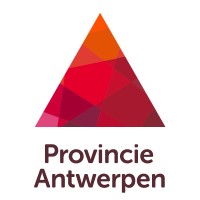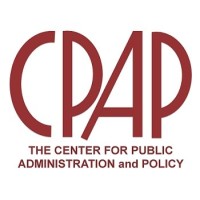Company Details
bayarearegionalcollaborative
1
80
921
ca.gov
0
BAY_1106762
In-progress

Bay Area Regional Collaborative (BARC) Company CyberSecurity Posture
ca.govThe Bay Area Regional Collaborative, or BARC, is a consortium of government agencies in the San Francisco Bay Area working together to address issues of regional significance, with a focus on climate change. As a forum for addressing cross-cutting challenges facing the nine-county San Francisco Bay Area, BARC’s ultimate goal is to improve the quality of life for all Bay Area residents. To achieve this, we bring together member agencies and other key stakeholders to advance collaborative, interdisciplinary work on a range of regional issues that cannot be fully addressed by any one agency. BARC is comprised of a Governing Board made up of board members and commissioners from member agencies. BARC also actively engages the executive leadership of the member agencies in collaborative problem solving, including the leadership of BARC’s three non-voting partner agencies. BARC staff carry out work at the direction of the Governing Board, working collaboratively with agency staff and regional stakeholders to implement cross-cutting initiatives. Our voting member agencies are the Metropolitan Transportation Commission (MTC), Association of Bay Area Governments (ABAG), Bay Area Air Quality Management District (BAAQMD), and the Bay Conservation and Development Commission (BCDC). Our non-voting partner agencies include the California State Coastal Conservancy (SCC), San Francisco Bay Regional Water Quality Control Board, and Caltrans District 4.
Company Details
bayarearegionalcollaborative
1
80
921
ca.gov
0
BAY_1106762
In-progress
Between 700 and 749

 BARC Global Score (TPRM)
BARC Global Score (TPRM)XXXX



No incidents recorded for Bay Area Regional Collaborative (BARC) in 2025.
No incidents recorded for Bay Area Regional Collaborative (BARC) in 2025.
No incidents recorded for Bay Area Regional Collaborative (BARC) in 2025.
BARC cyber incidents detection timeline including parent company and subsidiaries

The Bay Area Regional Collaborative, or BARC, is a consortium of government agencies in the San Francisco Bay Area working together to address issues of regional significance, with a focus on climate change. As a forum for addressing cross-cutting challenges facing the nine-county San Francisco Bay Area, BARC’s ultimate goal is to improve the quality of life for all Bay Area residents. To achieve this, we bring together member agencies and other key stakeholders to advance collaborative, interdisciplinary work on a range of regional issues that cannot be fully addressed by any one agency. BARC is comprised of a Governing Board made up of board members and commissioners from member agencies. BARC also actively engages the executive leadership of the member agencies in collaborative problem solving, including the leadership of BARC’s three non-voting partner agencies. BARC staff carry out work at the direction of the Governing Board, working collaboratively with agency staff and regional stakeholders to implement cross-cutting initiatives. Our voting member agencies are the Metropolitan Transportation Commission (MTC), Association of Bay Area Governments (ABAG), Bay Area Air Quality Management District (BAAQMD), and the Bay Conservation and Development Commission (BCDC). Our non-voting partner agencies include the California State Coastal Conservancy (SCC), San Francisco Bay Regional Water Quality Control Board, and Caltrans District 4.


Under the leadership of Martha Hall Findlay, the School of Public Policy provides a practical, global and focused perspective on public policy analysis and practice in four focus areas: Social Policy and Health, Energy and Environmental Policy, Fiscal and Economic Policy as well as International Pol

Changing Georgia Policy, Changing Georgians’ Lives – Since 1991 The Georgia Public Policy Foundation is a 501(c)(3) non-profit, nonpartisan research institute. Our mission is to improve the lives of Georgians through public policies that enhance economic opportunity and freedom. We believe

Our Mission: As the leading business organization in Illinois, the Illinois Chamber of Commerce is dedicated to advocating for a business environment that promotes economic growth, free enterprise, and economic prosperity for businesses of all sizes and across all industries. The Illinois Chamber

De provincie Antwerpen, dat zijn 1,9 miljoen inwoners, 67 gemeenten en 2855 km² aan potentieel. Met een wereldhaven links, de natuurrijke Kempen rechts en alles daartussen. Als streekbestuur is de provincie groot genoeg om veel te doen en klein genoeg om veel te betekenen. Vaak achter de schermen,

We serve job-seekers and businesses, providing resources to develop a skilled workforce that meets employer needs. Job-seekers can • build a resume and interview skills, • create a career mission statement, • join a job-search team, • network with employers and peers, • attend workshops;

The mission of the Virginia Tech Center for Public Administration and Policy (CPAP) is to promote good governance and the advancement of capable and ethical public service by providing outstanding education, research, and outreach in the theory and practice of public administration, management, and
.png)
Thinking about whether Palo Alto Networks is a buy right now? If you have even a hint of curiosity about the stock's value,...
By Juliet ETEFE ([email protected]) Virtual Infosec Africa (VIA), in partnership with global cybersecurity firm Exabeam, has launched Ghana's...
Mohit Chawla, Deputy Inspector General (DIG) of Himachal Pradesh Police, has been honoured with the Chief Information Security Officer...
CINCINNATI (WXIX) -As Black Friday weekend approaches, cybersecurity experts are warning shoppers about increased online scams targeting...
There have been a lot of updates in privacy and cybersecurity in the last month. Read on to find out what they are.
As the social media ban for kids under 16 approaches, popular messaging app Snapchat says young people will be able to verify their age by...
Zero Trust Architecture (ZTA) is the future of cybersecurity — it is more than just a catchphrase, but recognizes that “there is no user or...
A 15‑year‑old in Jordan who goes by the handle “Rey” online has been allegedly identified as a key figure in the hacking crew Scattered...

Explore insights on cybersecurity incidents, risk posture, and Rankiteo's assessments.
The official website of Bay Area Regional Collaborative (BARC) is https://barc.ca.gov/.
According to Rankiteo, Bay Area Regional Collaborative (BARC)’s AI-generated cybersecurity score is 742, reflecting their Moderate security posture.
According to Rankiteo, Bay Area Regional Collaborative (BARC) currently holds 0 security badges, indicating that no recognized compliance certifications are currently verified for the organization.
According to Rankiteo, Bay Area Regional Collaborative (BARC) is not certified under SOC 2 Type 1.
According to Rankiteo, Bay Area Regional Collaborative (BARC) does not hold a SOC 2 Type 2 certification.
According to Rankiteo, Bay Area Regional Collaborative (BARC) is not listed as GDPR compliant.
According to Rankiteo, Bay Area Regional Collaborative (BARC) does not currently maintain PCI DSS compliance.
According to Rankiteo, Bay Area Regional Collaborative (BARC) is not compliant with HIPAA regulations.
According to Rankiteo,Bay Area Regional Collaborative (BARC) is not certified under ISO 27001, indicating the absence of a formally recognized information security management framework.
Bay Area Regional Collaborative (BARC) operates primarily in the Public Policy Offices industry.
Bay Area Regional Collaborative (BARC) employs approximately 1 people worldwide.
Bay Area Regional Collaborative (BARC) presently has no subsidiaries across any sectors.
Bay Area Regional Collaborative (BARC)’s official LinkedIn profile has approximately 80 followers.
Bay Area Regional Collaborative (BARC) is classified under the NAICS code 921, which corresponds to Executive, Legislative, and Other General Government Support.
No, Bay Area Regional Collaborative (BARC) does not have a profile on Crunchbase.
Yes, Bay Area Regional Collaborative (BARC) maintains an official LinkedIn profile, which is actively utilized for branding and talent engagement, which can be accessed here: https://www.linkedin.com/company/bayarearegionalcollaborative.
As of November 27, 2025, Rankiteo reports that Bay Area Regional Collaborative (BARC) has not experienced any cybersecurity incidents.
Bay Area Regional Collaborative (BARC) has an estimated 1,026 peer or competitor companies worldwide.
Total Incidents: According to Rankiteo, Bay Area Regional Collaborative (BARC) has faced 0 incidents in the past.
Incident Types: The types of cybersecurity incidents that have occurred include .
.png)
Angular is a development platform for building mobile and desktop web applications using TypeScript/JavaScript and other languages. Prior to versions 19.2.16, 20.3.14, and 21.0.1, there is a XSRF token leakage via protocol-relative URLs in angular HTTP clients. The vulnerability is a Credential Leak by App Logic that leads to the unauthorized disclosure of the Cross-Site Request Forgery (XSRF) token to an attacker-controlled domain. Angular's HttpClient has a built-in XSRF protection mechanism that works by checking if a request URL starts with a protocol (http:// or https://) to determine if it is cross-origin. If the URL starts with protocol-relative URL (//), it is incorrectly treated as a same-origin request, and the XSRF token is automatically added to the X-XSRF-TOKEN header. This issue has been patched in versions 19.2.16, 20.3.14, and 21.0.1. A workaround for this issue involves avoiding using protocol-relative URLs (URLs starting with //) in HttpClient requests. All backend communication URLs should be hardcoded as relative paths (starting with a single /) or fully qualified, trusted absolute URLs.
Forge (also called `node-forge`) is a native implementation of Transport Layer Security in JavaScript. An Uncontrolled Recursion vulnerability in node-forge versions 1.3.1 and below enables remote, unauthenticated attackers to craft deep ASN.1 structures that trigger unbounded recursive parsing. This leads to a Denial-of-Service (DoS) via stack exhaustion when parsing untrusted DER inputs. This issue has been patched in version 1.3.2.
Forge (also called `node-forge`) is a native implementation of Transport Layer Security in JavaScript. An Integer Overflow vulnerability in node-forge versions 1.3.1 and below enables remote, unauthenticated attackers to craft ASN.1 structures containing OIDs with oversized arcs. These arcs may be decoded as smaller, trusted OIDs due to 32-bit bitwise truncation, enabling the bypass of downstream OID-based security decisions. This issue has been patched in version 1.3.2.
Suricata is a network IDS, IPS and NSM engine developed by the OISF (Open Information Security Foundation) and the Suricata community. Prior to versions 7.0.13 and 8.0.2, working with large buffers in Lua scripts can lead to a stack overflow. Users of Lua rules and output scripts may be affected when working with large buffers. This includes a rule passing a large buffer to a Lua script. This issue has been patched in versions 7.0.13 and 8.0.2. A workaround for this issue involves disabling Lua rules and output scripts, or making sure limits, such as stream.depth.reassembly and HTTP response body limits (response-body-limit), are set to less than half the stack size.
Suricata is a network IDS, IPS and NSM engine developed by the OISF (Open Information Security Foundation) and the Suricata community. In versions from 8.0.0 to before 8.0.2, a NULL dereference can occur when the entropy keyword is used in conjunction with base64_data. This issue has been patched in version 8.0.2. A workaround involves disabling rules that use entropy in conjunction with base64_data.

Get company history
















Every week, Rankiteo analyzes billions of signals to give organizations a sharper, faster view of emerging risks. With deeper, more actionable intelligence at their fingertips, security teams can outpace threat actors, respond instantly to Zero-Day attacks, and dramatically shrink their risk exposure window.
Identify exposed access points, detect misconfigured SSL certificates, and uncover vulnerabilities across the network infrastructure.
Gain visibility into the software components used within an organization to detect vulnerabilities, manage risk, and ensure supply chain security.
Monitor and manage all IT assets and their configurations to ensure accurate, real-time visibility across the company's technology environment.
Leverage real-time insights on active threats, malware campaigns, and emerging vulnerabilities to proactively defend against evolving cyberattacks.




